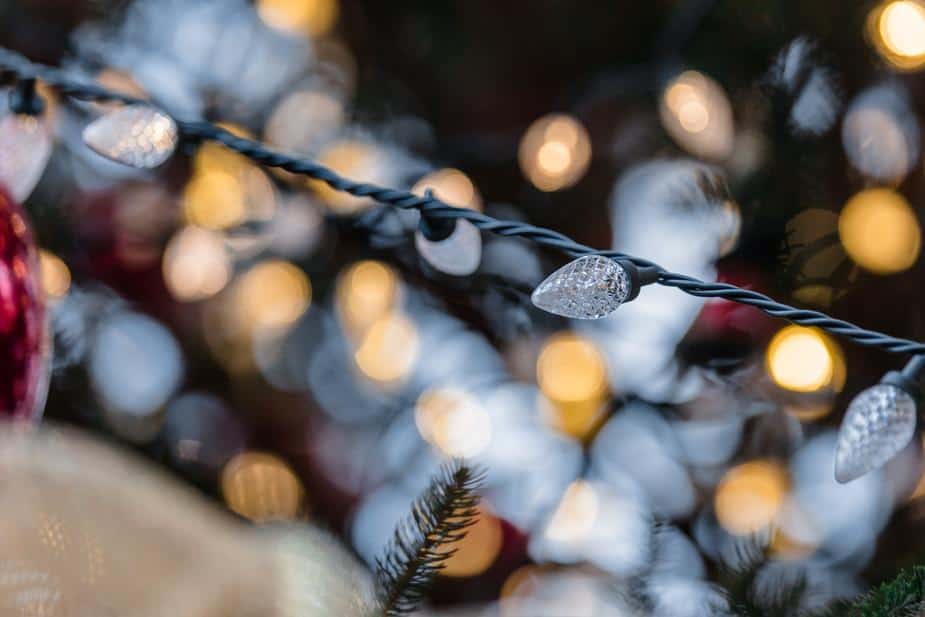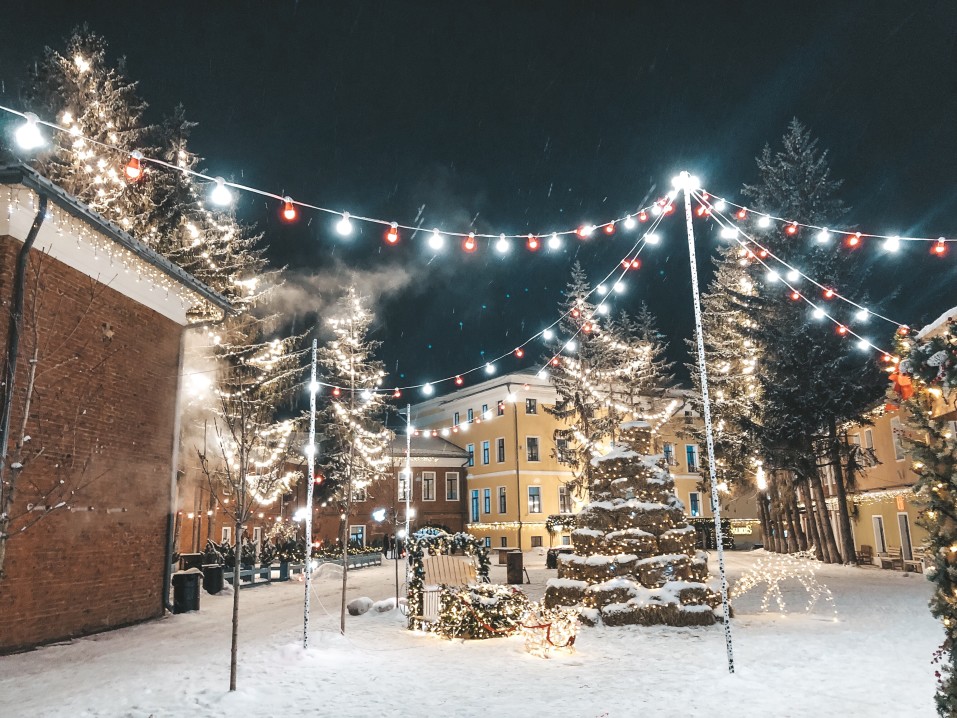Home holiday lights puts everyone in the spirit of the season. But decorating the outside of your home for the holidays can be a creative challenge. Your home may have unique architecture, you could prefer a particular or difficult lighting design, or perhaps you don’t have electrical outlets outside!
Don’t worry – home holiday lights don’t have to be complicated. Simply accent the key features of your house and yard for maximum curb appeal and holiday magic.
Here are ten tips for achieving your best and most efficient home holiday lighting:
Best Home Holiday Lights Tips for This Holiday Season
Consider Your Colors
Whether you adhere to a classic all-white lighting scheme or want to captivate with all of the colors, give your color scheme some serious thought. This is your best and easiest opportunity for creativity!
Make Sure to Measure
Measuring is truly the meat of the task. You’ll want to actually calculate how many linear feet of string you need wherever you’re running home holiday lights, like around windows and doors and along the roofline.
Once you’ve tallied the linear feet, you’ll want to check the lighting’s package for the length — and don’t forget to add in the distance between the outdoor socket and where the run of lights starts.
Start at the Center
We suggest the best approach to lighting the front exterior of your home is to start at the center and work your way out to the sides.
To showcase distinctive architectural details, like gables, arches, chimneys or other rooftop features, try to tie the roof in with the ground for different layers of lighting. The easiest approach is to create an outline along the gutter line or across the peak of the roof with the front door as the focal point.
Light Your Landscape
Lighting shrubs and trees can also guide the eye to the main entrance of your house. And canopy wrap home holiday lights make lighting shrubs and trees super simple.
Lighting walkways, the borders of garden beds, and outdoor sculptures or water features can also add visual interest to your home lighting design.
Set Your Spacing
The distance between individual lights isn’t uniform, so take a tape measure with you to determine the spacing between lights, and buy sets that come with less than 12 inches between bulbs. Typically, larger bulbs, like chunky C7s or C9s for the roof, look best when the lights are between 6 and 10 inches apart. Smaller lights or minis should be spaced more tightly to avoid having to wrap a mailbox post or a column multiple times.
Beware of the Bulb
Incandescent bulbs offer warm white lights with a slight yellow cast. They are great for smaller jobs, like lighting a wreath or a garland, and are generally less expensive than LEDs, but they have a shorter life span and consume 80 percent more energy.
LED lights last longer, shine brighter, are more energy efficient and require less wattage than incandescent bulbs. So for bigger jobs, you’ll likely want to go with more-efficient LEDs. They’re available in a wide range of styles, from minis and colorful retro-style C7s to larger globes. The quality of the light varies with LEDs, so look for wording such as “soft white” or “classic white” on the packaging to avoid bulbs with a cool blue undertone.
Solar-powered home holiday lights are another option. They cost a bit more, but they have no wires to attach and they automatically turn on at night and off at dawn.
Of course, you’ll want to make sure the lights that you use are rated for indoor and outdoor use — or specifically outdoor if that is where you’ll be using them. Also, remember to store your light strings in a dark place when the holidays are over. Red, green, blue, and purple lights, especially, will lose their color due to fading.
Power Up—Carefully
Safety is paramount this season. Try to avoid connecting more than five or six strands of incandescent lights, or ten strings of incandescent mini-lights end-to-end and overloading the circuit. LEDs, on the other hand, are often spaced closer together than incandescents, so you can string more of them end to end.
With most homes, you can use just one exterior outlet as most outlets are typically a 15 amp service. But keep in mind how much you are plugging in and be cautious about your use of electricity.
You should also avoid pulling the strands too tight in order to reach an outlet. Also, don’t overwork your extension cord. We suggest spending a bit more on heavy-duty extension cords to save yourself from having home holiday lights go straight to the socket while also avoiding overloading.
Inspect Your Wires
Wires become brittle and bend in the cold, so beware that you don’t have exposed copper or broken sockets. If you see frayed wires, don’t try to save the light strands. Throw those home holiday lights away.
Respect Electricity
You can’t have a spectacle of home holiday lights without electricity (unless you’ve gone solar), but this magic can also be a menace. Give electricity the respect it is due.
Once again, beware of the bulb and don’t assume all lights are designed for outdoor use; You may want to wrap all connections between strings with electrical tape to keep moisture out. Always plug lights into a covered outlet protected with a ground-fault circuit interrupter (GFCI). Seriously — running cords from inside the house through a window or a mail slot is a fire hazard! And lastly, make sure to keep your connections out of any possible groundwater.
Cut Off Your Home Holiday Lights
Lights are best viewed in the dark, so don’t leave them on around the clock. You can cut your holiday power use by using light timers. Or, just plan to have your home holiday lights come on at dusk and shut off in the early morning hours or after your family and any spectators have settled for the night.
Also, don’t be lazy and leave your lights up after the holiday is over. Daily exposure to the weather over a period of time can cause damage to the wires, lights, and sockets. The longer you leave them up after Christmas, the sooner you’ll have to replace them.
Everyone wants their holidays to be merry and bright, but no one wants to be caught off guard by high electricity bills. Our bonus tip is to use an energy cost calculator to estimate any additions to your holiday-time utility bills while funding your festive display.
Happy Holidays!




Leave a Reply